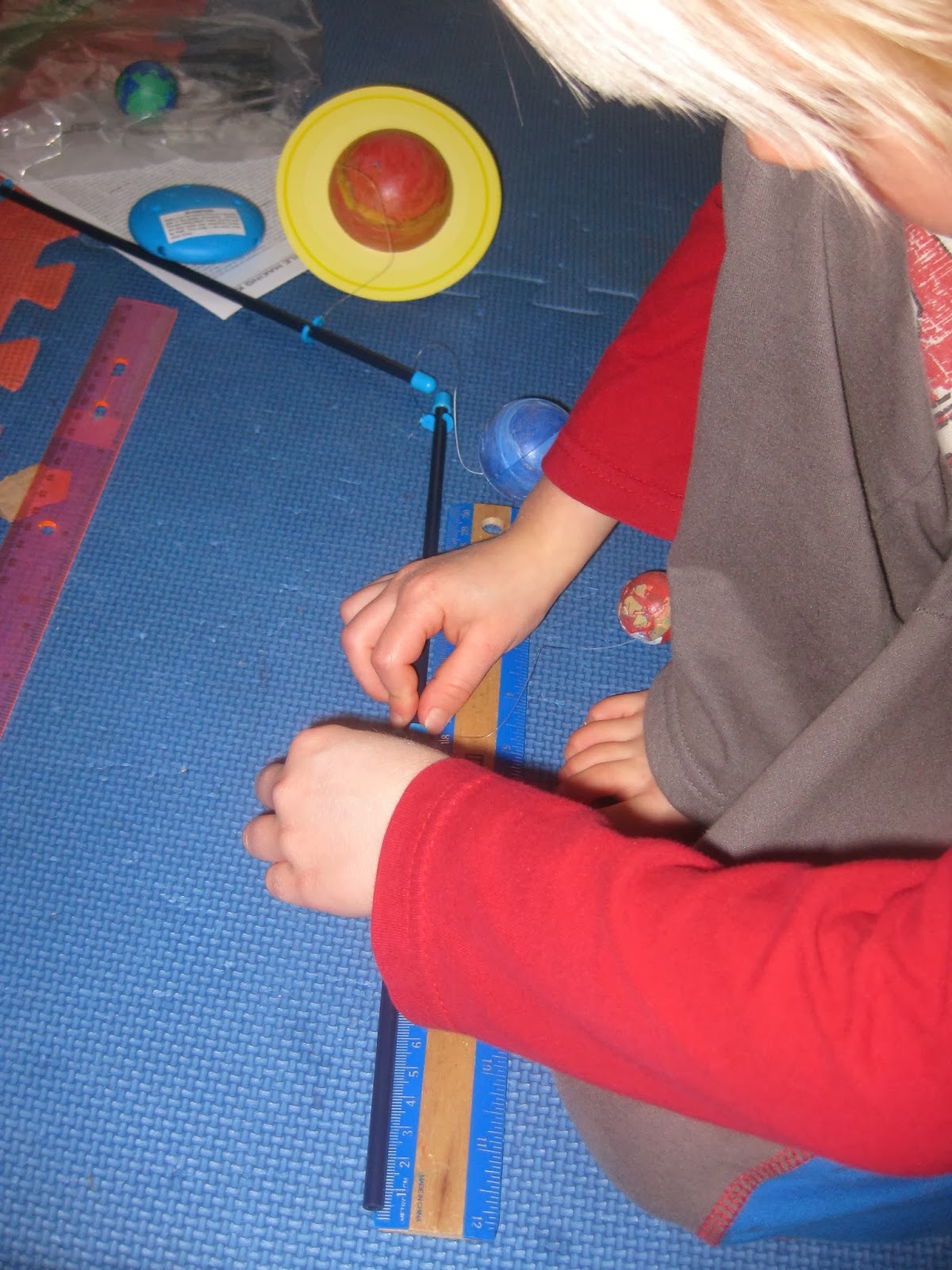Although I am acutely aware that this "topic" is not officially located in the Ontario curriculum documents until grade 6, I truly could care less, as I have always felt that any "topic" can be taught at any age, provided it is at the right learning level. Also, I think it would have been pretty
The reason that I chose this model in particular is because it not only provides a three dimensional representation of our solar system, but it also requires the user to paint and assemble each planet and then measure out both the length of string as well as the distance between each planet, in order to have a somewhat realistic representation of our solar system.
 When painting the planets that came complete with topological features, my children decided to use their "Big Book of Space" along with the cover of the box as guides-reinforcing their "research skills" along with their artistic ones. Naturally the kit only came with a strip of primary colours plus black and white, so I used that "opportunity" to discuss primary colours and colour mixing and a little bit about light and dark as they made the rest of the colours they needed according to their references.
When painting the planets that came complete with topological features, my children decided to use their "Big Book of Space" along with the cover of the box as guides-reinforcing their "research skills" along with their artistic ones. Naturally the kit only came with a strip of primary colours plus black and white, so I used that "opportunity" to discuss primary colours and colour mixing and a little bit about light and dark as they made the rest of the colours they needed according to their references.Once the paint was dry, they applied the glow paint as I threw in a little bit of information about what a phosphor is and how it sucks up light and then spits it out. We then moved on to the actual setting up of the mobile, and now I know why baby mobiles cost 50 bucks, even at Walmart!
Rather than do it myself, I asked my children to read the instructions and help me make sense of the diagram. They each measured out the string length for 4 planets and then worked together to space them out properly along the mobile rods.
They ended up with a beautiful model of the solar system that will continue to give them a visual representation of the planets, the sun and the concept of an orbit. I ended up with a project that incorporated science, math and art, all for the cost of 20 bucks and 5 days of time.
The downside? They are fighting over who gets to have it in their room at night, so another purchase and project may be coming down the pipeline!




